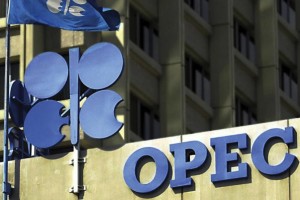
OPEC said on Tuesday a long-awaited rebalancing of the oil market was under way at a “slower pace” and reported that its own output in May jumped due to gains in nations exempt from a pact to reduce supply.
In a monthly report, the Organization of the Petroleum Exporting Countries said its output rose by 336,000 barrels per day (bpd) in May to 32.14 million bpd led by a rebound in Nigeria and Libya, which were exempted from supply cuts because unrest had curbed their output.
The boost means OPEC is pumping more than its forecast of average global demand for its crude this year, hindering efforts to reduce a glut. But Libyan and Nigerian output remains volatile, meaning the gain may not last.
OPEC said oil inventories in industrialised countries dropped in April and would fall further in the rest of the year, but a recovery in U.S. production was slowing efforts to get rid of excess supply.
“The rebalancing of the market is under way, but at a slower pace, given the changes in fundamentals since December, especially the shift in U.S. supply from an expected contraction to positive growth,” OPEC said in the report.
Oil prices gave up gains on Tuesday after the release of the report to trade towards $48 a barrel, below the $60 level that top OPEC producer Saudi Arabia would like to see and less than half the level of mid-2014.
Under the deal to support the market, OPEC is curbing output by about 1.2 million bpd while Russia and other non-OPEC producers are cutting half as much. With the glut slow to shift, producers agreed in May to prolong the accord until March 2018.
In the report, OPEC pointed to continued high compliance by its members with the supply deal and said oil stocks in industrialised nations fell in April – although they are still 251 million barrels above the five-year average.
Supply from 11 OPEC members with production targets under the accord – all except Libya and Nigeria – averaged 29.729 million bpd last month, according to figures from secondary sources that OPEC uses to monitor output.
That means OPEC has again complied more than 100 percent with the plan, according to a Reuters calculation. OPEC did not publish a compliance number.
SAUDI REPORTS LOWER OUTPUT
Saudi Arabia, which has voluntarily cut production below its OPEC target, told OPEC it lowered output further by about 66,000 bpd in May to 9.88 million bpd.
OPEC cut its estimate of oil supply growth from producers outside the group this year to 840,000 bpd from 950,000 bpd, following the decision to extend the curbs.
It even trimmed its forecast for growth in the United States, where shale producers have gained impetus from the higher prices brought about by the OPEC-led cut.
U.S. output is still expected to rise by 800,000 bpd in 2017, contributing almost all the non-OPEC gain.
Due to the lower supply now expected from all outside producers, OPEC raised the forecast demand for its crude this year by 100,000 bpd to 32.02 million bpd – below its May output.
Should the recovery in Nigeria and Libya prove sustainable and others not cut more, the market could remain in surplus. This could lead to calls for Nigeria and Libya’s output to be capped – a step OPEC says is too early for now.
The OPEC production figures are for 13 members and do not yet include Equatorial Guinea, which joined last month.